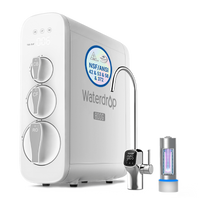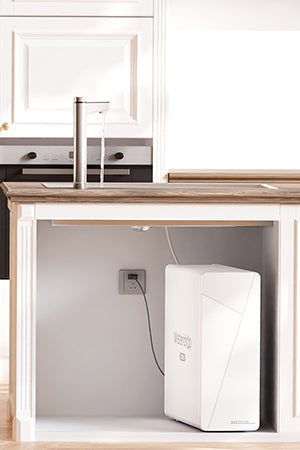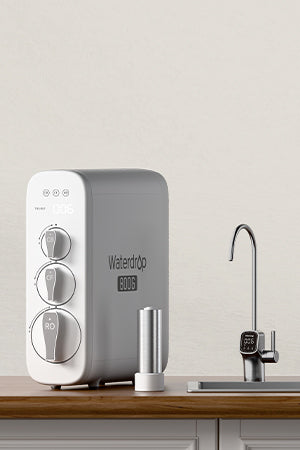The United States is vulnerable to almost all natural disasters, from storms to wildfires and others. Over the last five years,
loss from natural disasters has risen to over $600 billion . The
average record is over 60,000 deaths across the world. And with the increasing global climate change, the United States is even at a higher risk of more disasters.
Considering all of these factors, it is important to know how to stay protected in the face of these disasters. It may take several years to recover from a disaster that lasted for a few minutes. From major infrastructural damages to extensive clean-up works, there is always a lot to do.
Interestingly,
municipal water is highly prone to the effects of almost all forms of natural disasters.
The Effects of Disasters on Drinking Water
In February 2021, the government recommended that local residents
boil their water before drinking. This was the aftermath of the
Houston Storm, which considerably and adversely affected the area’s water infrastructure.
Water Contamination
Disasters almost always come with water contamination. From overflowing sewage to debris from wreckages, our water is always open to contamination from various sources. And these contaminations are not only dangerous to our health but also take time to clear up.
It was discovered in 2017 after Hurricane Harvey that mercury was present in the water of riverfront property in Channelview, Texas. It was even more disturbing because no one knew exactly how these contaminants got into the water.
Tokyo Bay also recently reported sewage leaks into swimming lines during the Olympics, with the water showing high amounts of E. coli after tests.
Water contamination is more prominent in well water, and that is why we advise well water users to be extra careful. Wellwater is at the risk of contamination from multiple sources, including chemicals, and livestock wastes. Drinking such water without purification will cause serious health issues.
Inadequate Infrastructure
Asides from damages to water supply, natural disasters also impair the movement of water across affected areas. For example, the Houston Storm led to extremely low-temperature levels, ending in pipe bursting and water pollution. Likewise,
aged transport pipes contribute to water recontamination. While these issues were not new, the extensive power outage revealed how vulnerable water infrastructures are to power outages. As a result, you may end up with untreated water in your homes after a few minutes of a power outage.
What are the important precautions?
Water is crucial to human’s survival. The longest anyone can go without water is usually a short time. If a natural disaster ever strikes in your area, chances are your drinking water will be contaminated. So, you should avoid drinking or using the water for other domestic chores.
The more important question is, what water would you use in such situations? We call it the emergency safe drinking water.
Store sufficient water for emergencies
The rule of thumb states that you should store enough water to last you a whole week in the event of an emergency. The average human drinks about a half-gallon of water every day. So, prepare a sufficient amount of pure water beforehand, and store it in a sanitized food-grade container. It is important not to open the containers except it is an emergency because they may be contaminated if fresh air bacteria are exposed.
Purchase packs of bottled water
Bottled water is another emergency source of clean and safe water. Every bottled water in the country has been subjected to the
Food and Drug Administration (FDA) tests and found safe. Therefore, they are safe to an extent.
It is best to get your emergency bottled water before a natural disaster strikes. Otherwise, it may be difficult to get it after an emergency.
How do you treat contaminated water after a disaster?
Boiling
Boiling kills almost all kinds of bacteria in water. For instance, a
one-minute boiling will eliminate E. coli and several other bacteria. However, you must leave the water to cool before drinking. The best way to cool your boiled water is to store it in a sanitized, tightly sealed container.
The effect of boiling with regard to water contamination is limited. Therefore, a few pollutants still persist in your boiled water – boiling only reduces them to a considerable extent. That is because the boiling process leads to the escape of contaminants gas into the air, increasing the amount of time needed to convert the last volume of contaminants to gas.
Chemical Disinfection
You can use household bleach to decontaminate your water after a disaster. Most municipal factories use
chloramine and chlorine for disinfection. While this can be a tricky DIY, it is not impossible, provided you know the amounts and ratio of disinfectants required.
However, it is important to mention that chlorine may
cause problems for the respiratory system. This is because chloramine usually reacts with air to produce a vapor, which is not entirely safe to breathe in for individuals with a complicated respiratory system.
The first level of chloramine effects is felt on our skin – the skin gets itchy on contact with low levels of chlorine.
The Water Filter Straw
The most efficient method of treating contaminated water after a disaster is to use a water filter straw. It is best suited for the blackout and breakdown of water transportation facilities that occur after a disaster.
A water filter straw has a 0.1-micron ultrafiltration membrane, which means it can efficiently reduce up to 99% contaminants in water. The filtration system removes sediments, rust, organics, particulates, bacteria, and even viruses in water. It also has a high-grade coconut shell activated carbon fiber that removes bad taste and foul odor.
Despite its compact size, a water filter straw has a relatively big capacity to deliver a safe, consistent, and improved drinking experience. You can get up to 100,000 gallons of filtered water from a single unit of water filter straw, ensuring you never run out of clean, drinking water.
The filtered water from your water filter straw is suitable for drinking and other outdoor uses, including emergency preparedness, traveling, camping, hiking, and more. It is a reliable source of emergency water in almost all situations.
Now, you will agree that your emergency kit is incomplete without this water filter straw.








































































